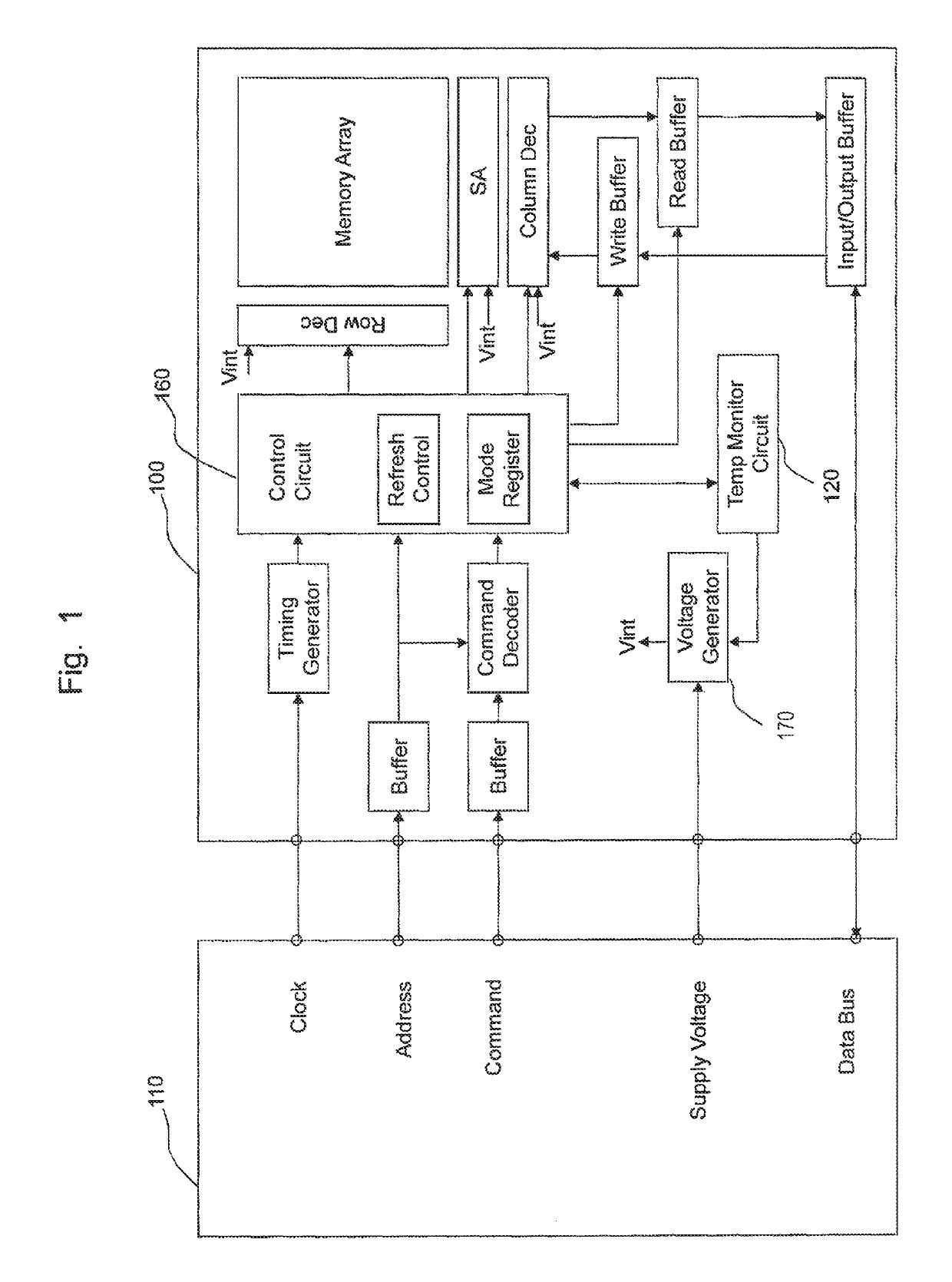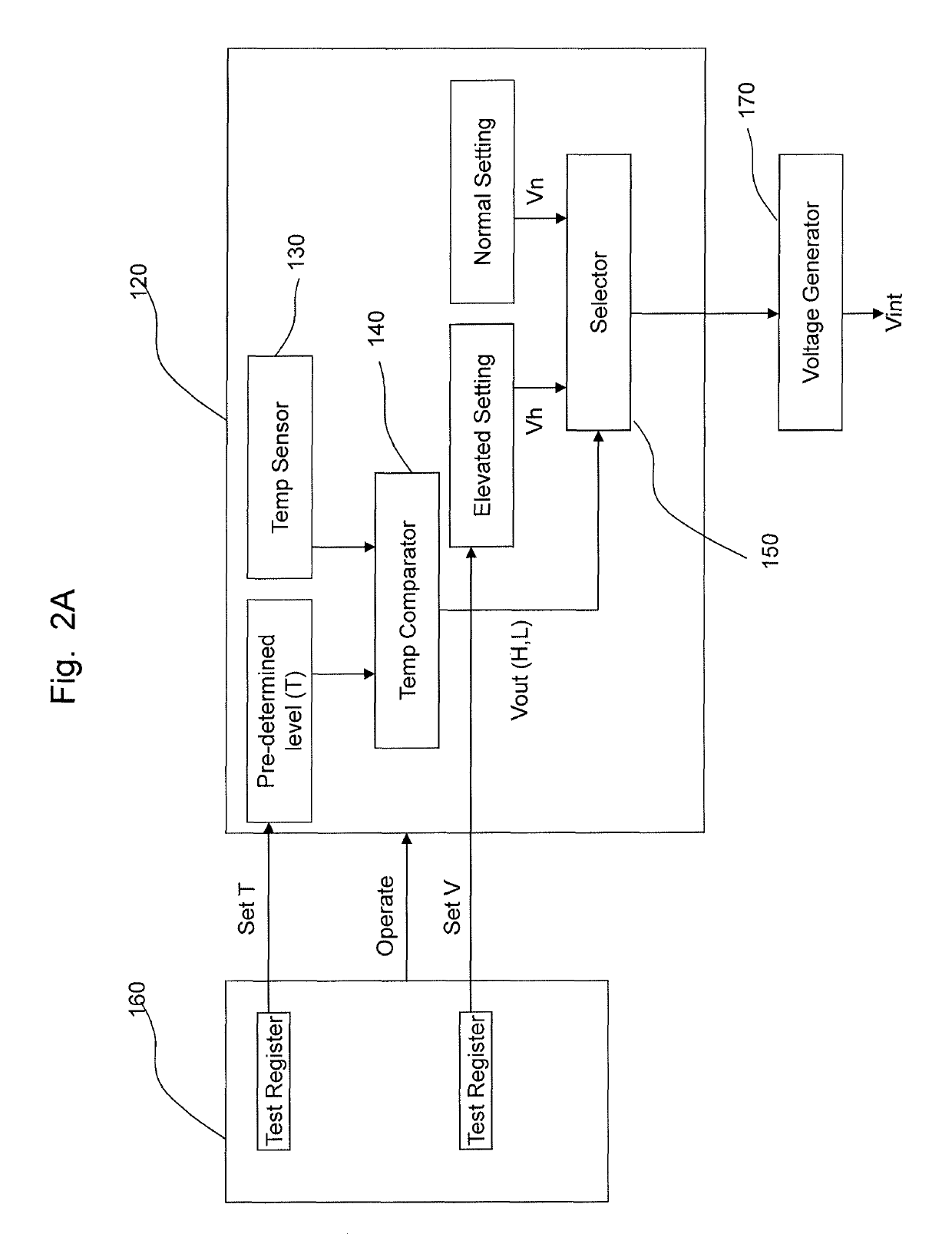Overheat protection circuit and method in an accelerated aging test of an integrated circuit
a technology of overheating protection and integrated circuit, which is applied in the direction of measurement devices, digital storage, instruments, etc., can solve the problems of many integrated circuits, or ics, experiencing degradation, repeated current consumption, and heating of the device, so as to reduce the possibility of overheating damage, the effect of reducing or non-existent, and efficient and reliabl
- Summary
- Abstract
- Description
- Claims
- Application Information
AI Technical Summary
Benefits of technology
Problems solved by technology
Method used
Image
Examples
first embodiment
[0045]FIG. 2A is a block diagram showing an example of a configuration of a temperature monitor circuit 120 and a control circuit 160 according to a In FIG. 2, the control circuit 160 sets a predetermined temperature level T (e.g., overheat trigger point) as well as a testing voltage level V. This testing voltage level may include either or both the elevated voltage level, Vh, and the normal voltage level, Vn. Further, either or both these values may be input from the tester device 110 and fed into the control circuit of the memory device, or may be pre-set in the memory device 100. The elevated voltage level, Vh, is higher than the normal voltage level, Vn.
[0046]The predetermined temperature T is the temperature trigger point such that if the operating temperature of the memory device 100 reaches this predetermined temperature level T, the memory device changes its operating conditions to be in a reduced-current-consumption state to ultimately lower the operating temperature.
[0047...
second embodiment
[0060]FIG. 3A is a block diagram showing an example of a configuration of a temperature monitor circuit 320 and a control circuit 360 according to a A circuit configuration and an operation of the temperature monitor circuit 320 and control circuit 360 are similar to the circuit configuration and the operation of the temperature monitor circuit 120 and control circuit 160, shown in FIG. 2A, and thus redundant explanations thereof will be omitted.
[0061]In FIG. 3A, the elevated voltage has three different voltage levels, V1, V2, and V3. V1 is highest voltage of all three, and V2 is a middle value, and V3 is the lowest voltage. The normal voltage setting remains to be Vn, and is lower than the lowest elevated voltage, V3. There is provided a gate and a timer to control transferring of signals of the path from the output of the temp comparator 340 to the selector 350. The gate is controlled by the timer, to control the timing, period, and / or frequency of the selection process of the se...
third embodiment
[0076]FIG. 4 is a block diagram showing an example of a configuration of a voltage generator according to a In this example, the voltage generator is configured to stop producing the voltage, thereby completely turning off the memory device 400, when the temperature of the memory device 400 reaches the overheat trigger point T.
PUM
 Login to View More
Login to View More Abstract
Description
Claims
Application Information
 Login to View More
Login to View More - R&D
- Intellectual Property
- Life Sciences
- Materials
- Tech Scout
- Unparalleled Data Quality
- Higher Quality Content
- 60% Fewer Hallucinations
Browse by: Latest US Patents, China's latest patents, Technical Efficacy Thesaurus, Application Domain, Technology Topic, Popular Technical Reports.
© 2025 PatSnap. All rights reserved.Legal|Privacy policy|Modern Slavery Act Transparency Statement|Sitemap|About US| Contact US: help@patsnap.com



